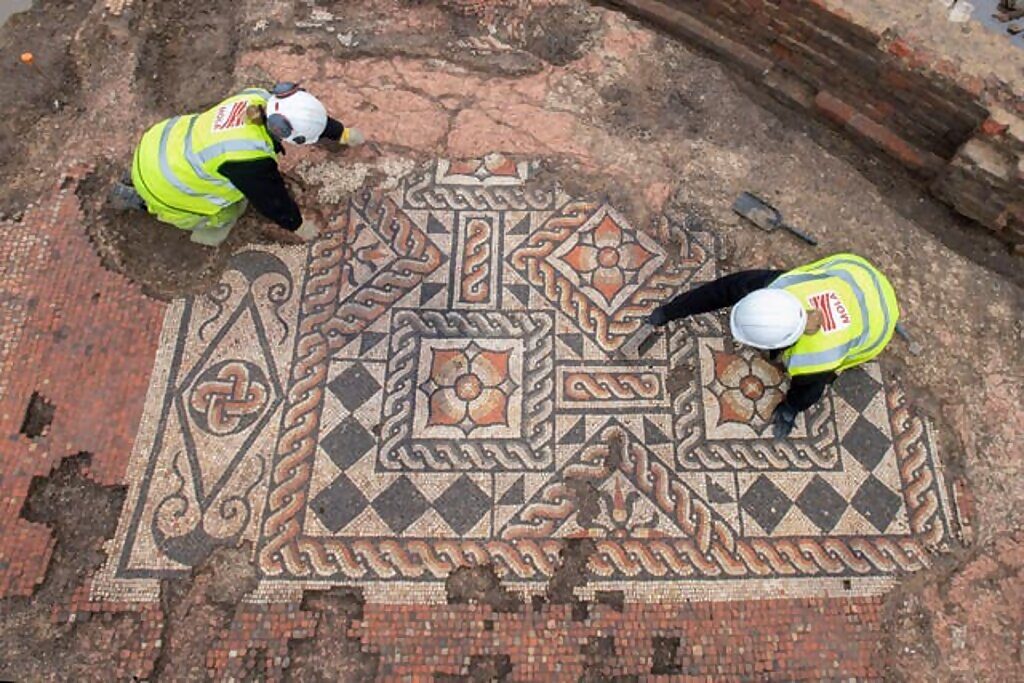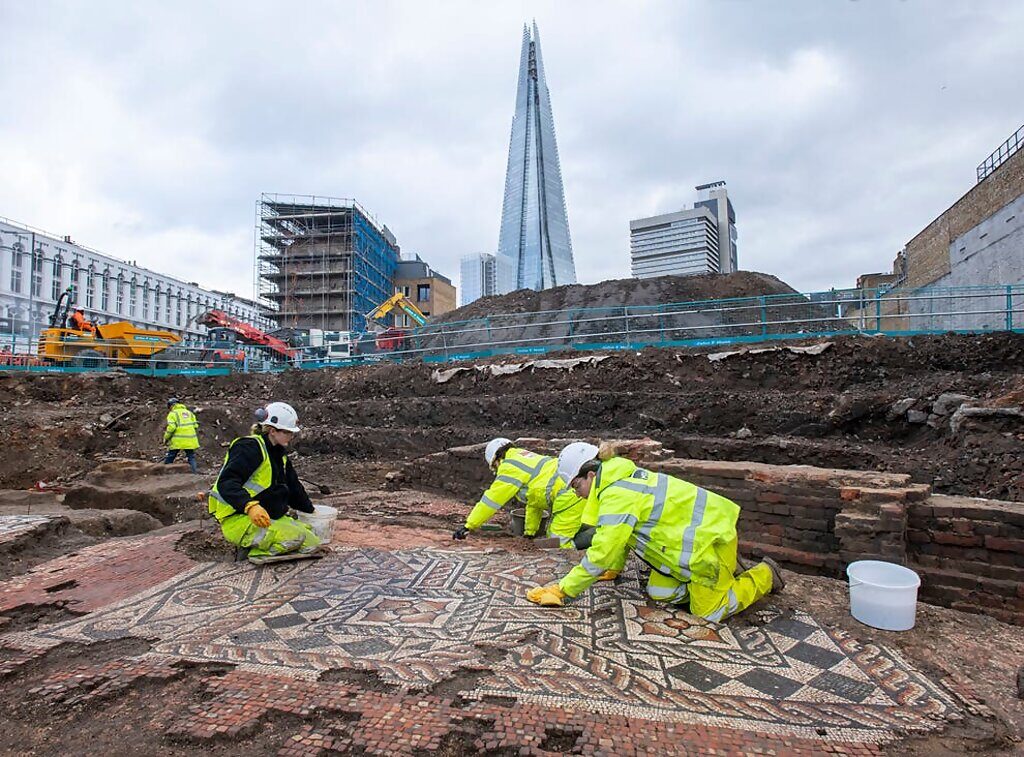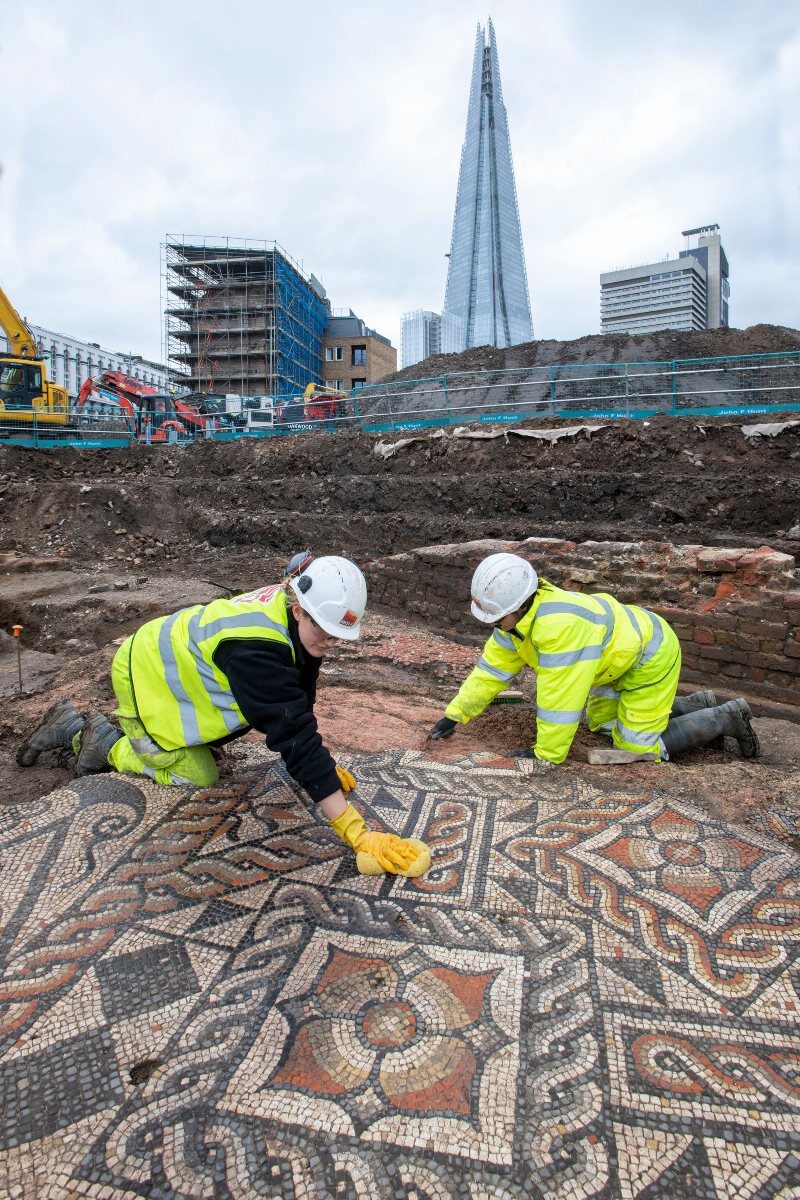
© MOLAArchaeologists said the discovery comes form ‘the heyday of Roman London’
Archaeologists working on a site in Southwark Street have uncovered the largest area of Roman mosaic to be discovered in London for half a century.
The precious tile work from "the heyday of Roman London" was discovered at a building site near the Shard in Southwark.
It once decorated the floor of a Roman dining room, experts believe.
Flowers and geometric patterns adorn the two embellished panels, which are thought to be almost 2,000 years old.

© MOLAMOLA archaeologists at work on the mosaic unearthed in Southwark
Museum of London
Archaeology (MOLA) site supervisor Antonietta Lerz said it was "a once-in-a-lifetime find in London".
"When the first flashes of colour started to emerge through the soil everyone on site was very excited," she said.
Archaeologists said the discovery comes form 'the heyday of Roman London'
Archaeologists think the mosaic dates to the late second or early third century, and would have decorated a room called a triclinium, furnished with dining couches for people to recline and eat.
It may have been part of a Roman
mansio - an upmarket "motel" offering accommodation, stabling, and dining rooms for state couriers and officials travelling to and from Roman Londinium.
There are traces of an earlier mosaic beneath the panels, suggesting the room was refurbished over the years - perhaps to make way for the latest trends.
Jewellery, ornaments, hairpins and sewing needles have also been found

© MOLACarefully cleaning the unearthed Roman mosaic
The largest panel is eight-metres long and shows colourful flowers surrounded by bands of intertwining strands - a motif known as a guilloche.
There are also lotus flowers and a pattern known as Solomon's knot, made from two interlaced loops.
Dr David Neal, former archaeologist with English Heritage and leading expert in Roman mosaic, has attributed this design to the "Acanthus group" - a team of mosaicists working in London who developed a unique local style.
The smaller panel has a simpler design, with two Solomon's knots, two stylised flowers and patterns in red, white and black.
Archaeologists have found a close parallel in Trier, Germany, and believe the same mosaicists were at work in both places.
Given the size of the dining room and its lavish decoration, archaeologists believe it was used by high-ranking officers and their guests.
The rest of the building is still being uncovered, but there are thought to be several rooms and corridors surrounding a central courtyard.
Another large Roman building has been found nearby which may have been the private residence of a wealthy family.
A decorated bronze brooch, a bone hairpin and a sewing needle have been unearthed there.
"These finds are associated with high-status women who were following the latest fashions and the latest hairstyles," Antonietta Lerz told
The Guardian.She said it represented "the heyday of Roman London".
"The buildings on this site were of very high status. The people living here were living the good life."
The site is being redeveloped as part of the Liberty of Southwark project, a complex of offices, homes, shops and restaurants.
You can see a 3D model of the find
here.For further details of the archaeological dig on the site see The Liberty of Southwark website
Reader Comments